|
Market Street / Red Lion Square
Hythe
01303 263900
https://theredlionhythe.com/
https://whatpub.com/red-lion-hotel
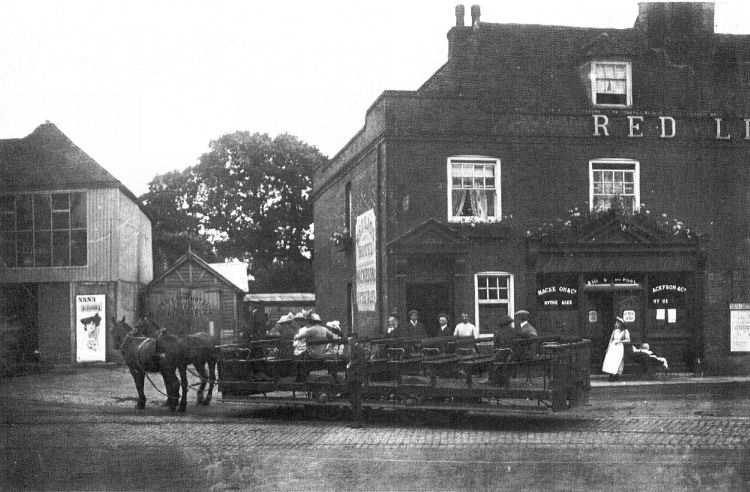
Above photos 1895, kindly sent by Peter Chamberlain. |
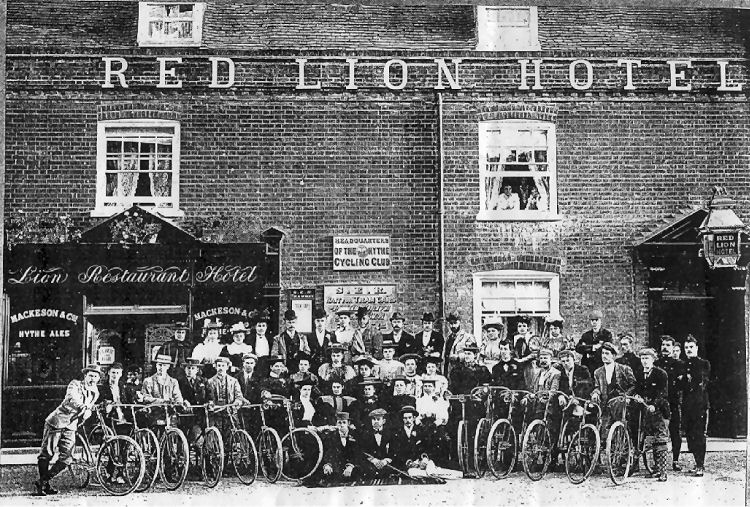
Above photo, date unknown. |

Above postcard, date unknown. |
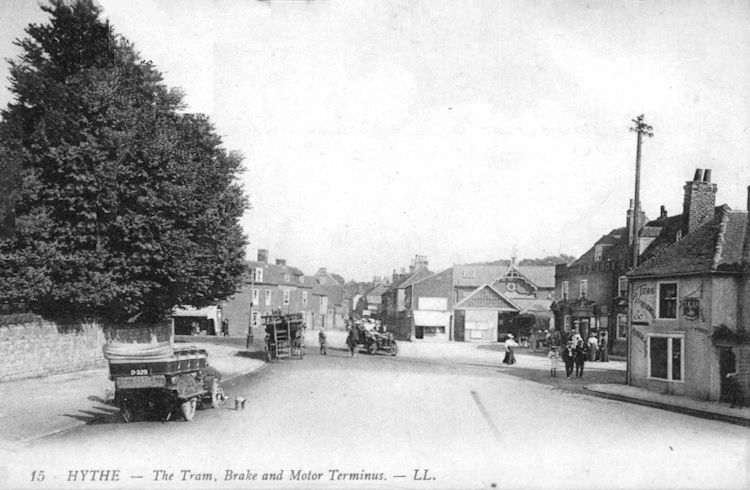
Above postcard circa 1907, kindly sent by Rory Kehoe. A nice Edwardian
view of the area to the front of the Red Lion which, being adjacent to
the tram and bus terminus, was well-placed to capture passing trade. |
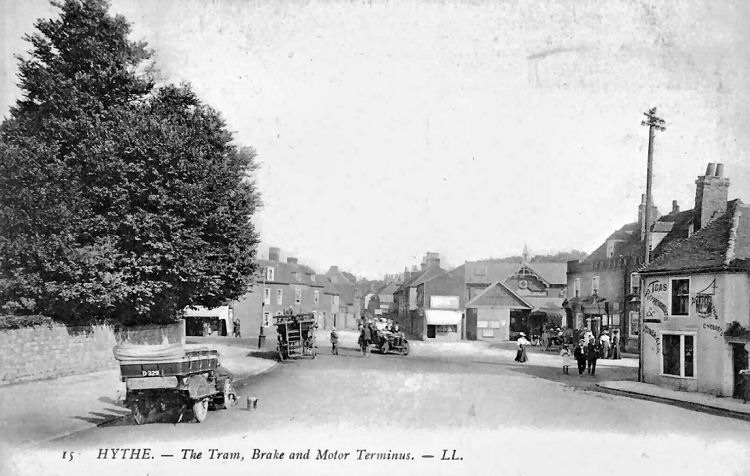
Above postcard, circa 1911, kindly sent by Rory Kehoe. |

Above postcard, date unknown. |

Above photo, date unknown. |
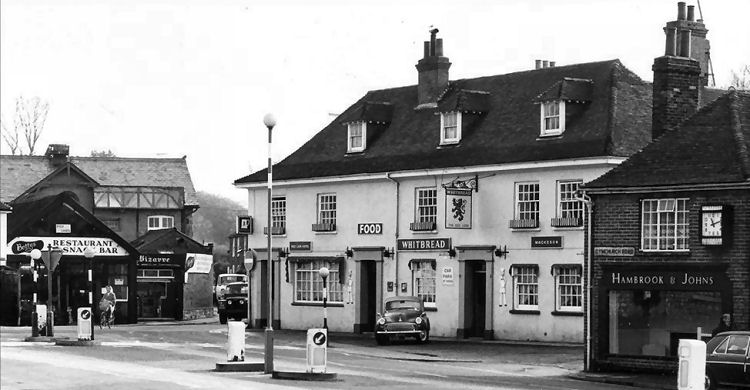
Above photo 1961. |
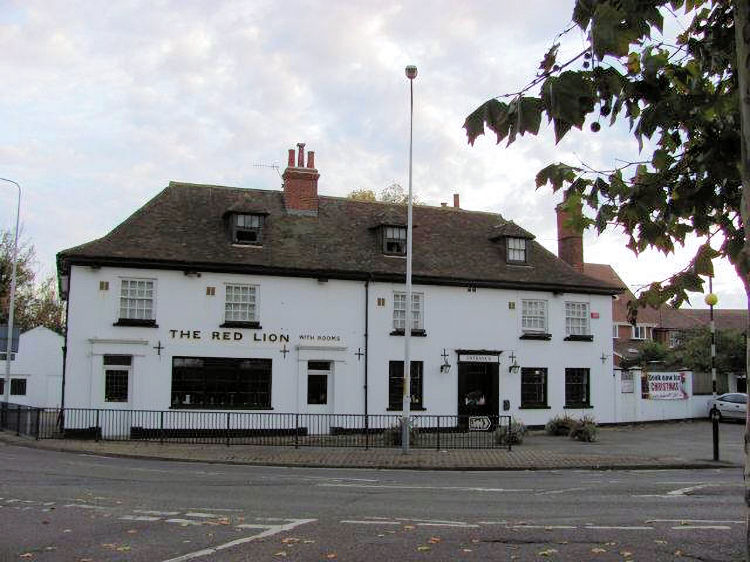
Above photo 2011. |

Photos date unknown from http://www.flickr.com
by John Law. |
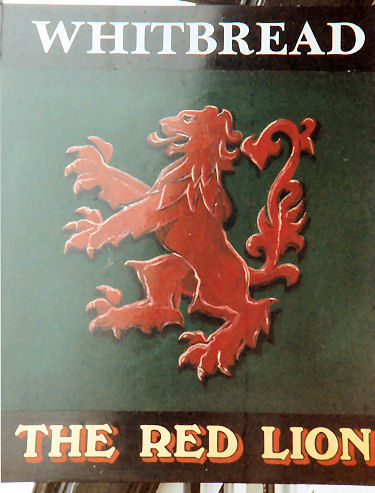
Red Lion sign March 1991 with thanks from Brian Curtis
www.innsignsociety.com
|
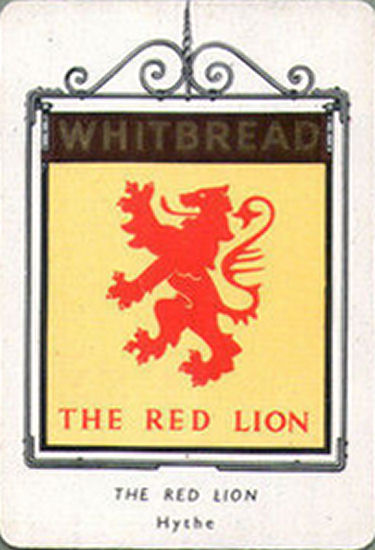 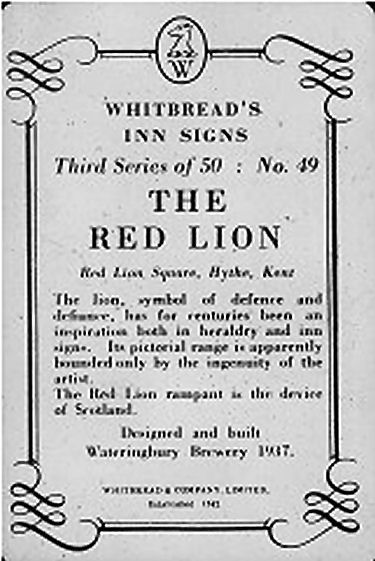
Above aluminium card issued June 1951. Sign series 3 number 49. |
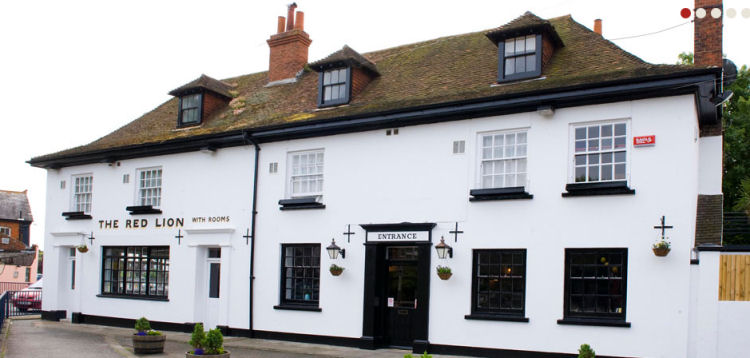
Above photo 2014. |
I have only just started to research into this area of Kent and I am
hoping to be able to update this page with further information later.
|
The following passage kindly compiled by Peter
Chamberlain from the history section of the Hythe library.
The Red Lion Hotel, Hythe
The Name
Most details of the Inn, now known as the "Red Lion," have changed over
the years. The site on which it stands was once known as Market Square
and sometimes the address was given as No. 1 Dymchurch Road. The change
from Market Square to Red Lion Square took place about 1914.
The Inn itself changed name – and not only in recent years. It is
possible that an inn or hotel stood on or near this site from 1622,
named the "Market Hotel."
In 1695 the inn was called “The Three Mariners”,
and this remained until 1723, 1754 or even 1800 – depending upon which
documents you read. One original train of thought was that the original
owner (who named the Inn “The Three Mariners”) moved from the premises
and took the name with him to the Inn in Windmill Street which now bears
the name. Further investigation has denied this as, at one time, both
establishment were trading under the same name.
The names have their own histories;
The "Three Mariners" started as a folk tale from the 17th/18th Century but
before the story, consider the Inn Sign…. which depicts ONE mariner –
usually with outstretched arms. The story goes that three mariners were
either shipwrecked on a remote island or cast adrift in a boat or
otherwise thrust into a situation where three seafaring persons were in
close proximity and starving. Well, push came to shove and, gory details
aside, only one of them survived. This mariner, when rescued, tried to
convince his rescuers and, more to the point, his employers that he was
worth three times his wages as he had er… assimilated.. two other
mariners. This explains the outstretched arms of the remaining mariner –
do you know any fishermen?
The tale is told (and may even have been created) by W. S. Gilbert (of
Gilbert and Sullivan fame) in his “Bab Ballads” as “The Yarn of the
Nancy Bell” where the rescued mariner describes himself as …a cook and a
captain bold and the mate of the Nancy brig; and a bo'sun tight and a
midshipmite and the crew of the captain's gig”. Somewhat more than
three, but the storyline is the same, though rather more graphic.
“The Red Lion” is the most common pub or inn name in Great Britain. As
it originally dates back to the 14th century, the derivation of any
particular pub's name cannot be certain unless the date at which the
name was first used can be ascertained. In the case of the Hythe "Red
Lion," the dates when it changed from the "Three Mariners" to the "Red Lion"
(1723 – 1800) preclude the best known origins – that of the badge of
John of Gaunt in the 14th century, and that James 1st (of England) who,
in the 17th century, decreed that every public building should show the
sign of the "Red Lion" (of Scotland). Surely, in this case, all pubs and
inns would have been called the "Red Lion" – or, more confusingly, have
displayed the "Red Lion" but still have been called their old name; thus
bringing about “The Stoat and Anvil at the sign of the Red Lion” for
example…
The best bet about the Hythe "Red Lion's" name is that the landlord or
owner wanted to curry favour with the local landowner of the time who,
being probably at least partly English, would have had a "Red Lion" as
part of his Coat of Arms. An alternative would be that the landlord at
the time was particularly unimaginative. A possibly more than believable
speculation that, following the end of James 1st's reign there were a
great number of signs and paraphernalia showing "Red Lions" – one of which
would look very nice above the front door of an Inn which shared a name
with another…..
Dates in the Red Lion's History:-
1604 Possibly a Market Hotel on Market Square – actual site not known.
1622 First mention of owner – Robert Finch
1623 owner Clement Harding
1624,25 owner Robert Harding
The following names were either the owner or licensee
1626 Robert Boys
1633 William Fanning
1637 John Brett
1639 James Fordred
1643 Janet Munro
1645 Thomas Newman
1695 First mention of The Three Mariners
1707 Valentine Therbane
1708 William Monger
Bought by Thomas Slodden – beer brewer – for £70
1754 Will of Nicolas Binfield mentions “Three Mariners”
1772 Edmund Harrison
1775 John Gibbs
1779 Alan Colyer
1791 Richard Friend –
was he one of the Friend family who ran the Brewery opposite?
1796 Edward Hammond
1800 James Elvey
From this date the names are probably those of licensees /landlords as
the inn was apparently part of the brewery estate which was sold by John
Friend to Henry and William Mackeson in 1800.
BUT – neither the "Three Mariners" nor the "Red Lion" is mentioned in the
Indenture regarding the sale. (Copy in Hythe Library)
Dates in the Red Lion's History: cont.
1801 James Watts
From 1805 to 1830, the Coroner's court was held at the "Red Lion" (see
later)
1817 Ed. Watts
1821 “Red Lion Hythe valued at £1,300” – by comparison, the "King's Head"
was
valued at £1,000 and the "Duke's Head" at £1,200.
1827 Abraham Chapple
1828/9 Ed. Watts
1832-47 Thos. King
1836 The "Red Lion" was the at centre of the Hythe cattle market. “The
ordinary of the "Red Lion" was attended by up to fifty buyers and
sellers of stock whereupon, “appropriate toasts were drunk”
(The “ordinary” was a public room where travellers and visitors would
take the meal of the day – no choice, but usually at least two courses,
the meal was also called “the ordinary”
1852 William King
1855/58 Thomas King
1859 James Smith
1862/82 Vince Gardner
1862 The Folkestone Artillery Band and the Hythe Volunteer Band played
through the town between 7 and 8 pm then proceeded to the "Red Lion Inn"
“where a few hours were spent in harmony and conviviality”.
1887 Mrs Elizabeth Perry
1896 The "Red Lion" was the HQ of the Hythe Cycling Club
1891-1916 Joseph Boorman
Dates in the Red Lion's History: cont.
1918/19 James Armour In 1918 Mrs E. Armour was fined 10/- for failing to
subdue lights
1920 The Mackeson Company – and hence the "Red Lion" – acquired by H & G Simonds – brewers of Reading
1921 A. E. Solly
1929 Audit recorded rent as £70, and Rates as £30. Stock for the year
consisted of 246 barrels, 2818 bottles (pints and half pints, 317
crates, 135 gallons of wine and 193 gallons of spirits.
The brewery owners, Simonds, sold their share capital to Jude Hanbury.
Some of the purchase price supplied by Whitbreads.
1934 Brewery and tied houses sold to Whitbread Fremlins
1968 Brewing ceased at the old Mackeson's Brewery opposite the Inn.
1973 The current building was listed Grade II
2000 Sept. Re-opened as “The Watersedge” with particularly inept sign of
a canal barge – none of which had ever been seen on the Hythe Military
Canal.
2005 July Re-opened as the "Red Lion" by Jim and Julia Brown.
2007 Nov. Jim Brown left blaming the smoking ban which he said in a
newspaper feature had reduced takings by 40%.
2008 to Date
The Building:-
Going back to the name change discussion, David Harper, in his book “The
Inn behind the Sign” about the Whitbread Inn Sign collection, prefers
the later date of 1801 when he says that “this house, then named the
"Three Mariners," plus cottage and stables, were included in the assets
sold”. This sale was that of John Friend's brewery to Henry and William Mackeson. “The purchase price was £700 – 28 time the annual rent of £25.
At this time the insurance covered “a pub and stables”. In 1821, on the
death of William Mackeson, a valuation of the estate includes “the
hotel”. This would coincide with the completion of the current building.
The “Listed Building” details call the building “early 19th century”.
In 1891 the Sandgate tram line was extended from the Seabrook Hotel
(now the Hotel Imperial) to Red Lion Square which, no doubt, improved
the Inn's takings. It is possible that the stables at the "Red Lion" were
pressed into service as tram sheds and/or stabling for the horses or
mules while the more permanent sheds were built on the corner of the
original Rampart Road (now the un-named parking area to the North of
Rampart Road). The roof of the permanent shed can still be seen from
outside the "Red Lion."
In 1894, “the brewers removed the old tram shed”
which supports the theory.
Most of the photographs of the "Red Lion" at the time were unintentional
as the photographers were portraying the various tram vehicles parked or
travelling in front of the inn. The odd one out is of the Hythe Cycling
Club – again, with the Inn in the background. New-fangled tramcars and
bicycles were far more interesting than coaching inns at the time.
However, the frontage shows some of the original features which suggest
that the pub and the Inn occupied separate ends of the building. The Mackeson Ales windows at the Eastern end show where the pub half was
located.
Other Users
In addition to the normal business of catering for travellers from the
stage coaches and trams together with the local trade of supplying the
local thirsty with beer, wines and spirits, the "Red Lion" played host to
various clubs, societies and some professional concerns. In the Dates
section, we see that the Hythe Cycling Club made the "Red Lion" their
Headquarters in 1896 and it seemed to be the rallying point (or at least
the dispersal point) of the Hythe Volunteer Band in 1862. The "Red Lion's"
situation adjacent to the cattle market (Red Lion Square was previously
Market Square) made it the ideal place to complete deals and to drown
sorrows after a less than successful day.
In addition to the various clubs and societies mentioned, visitors with
more serious intent made use of the "Red Lion." From 1805 to 1830 the
Coroner's court was held at the Inn. A booklet detailing these
“Coroners' Inquisitions” gives both everyday and somewhat macabre Causes
of Death; from “Departed this life by the visitation of God in a natural
way”, “Fell into Royal Military Canal while intoxicated and drowned”,
to “Not being of sound mind, memory or understanding, lunatik, hung
himself”. In these less than enlightened times, suicides were assumed to
be insane and the verdict of “lunacy” was pronounced. With the proximity
of the Royal Military Canal and the large number of troops around,
drowning in the canal figured regularly in the Coroner's lists. It is
not recorded whether the Inn was wholly occupied by the Coroner's court
or whether locals and visitors were also present during the Coroners
deliberations…
“Oh no!, not another lunatik - is it your round Harry?”
“Makes a change from all the drownin's last week Bert – no it ain't.”
The Red Lion in fiction
The "Red Lion" is mentioned in several of Russell Thorndike's “Doctor Syn”
stories but not as a haunt of smugglers; rather a coaching inn where
visitors to the area would take refreshment while the horses were
changed. It was here that Captain Foulkes was the centre of attention
when he arrived without his valuables and boots having been robbed by
highwayman Jimmie Bone on Stone Street. (“The Shadow of Syn” 1944).
|
|
Kentish Gazette, 29 January, 1783.
Hythe, Dec. 1, 1782.
Taken by Mistake, from the "Red Lion Inn," Hythe, a very good
saddle, with for small plated nails and Rasp stirrups, an old one
was left in exchange, with a name, Mr. Teackler, on the upper side
of the pad.
Whoever will give intelligence, where the saddle is, so as it's
maybe had again, shall receive reasonable satisfaction by applying
to Alan Colyer.
|
|
Kentish Gazette, 23 October, 1792.
Last week a man at the "Red Lion" public house at Hythe, drank 14
half quarterns and 7 penny glasses of
geneva, after which, he was taken in a state of insensibility to the
workhouse; where (not-withstanding every
medical assistance) he expired the next day in the greatest agonies.
Thus by an excessive indulgence of this swinith vice, he fell a
wretched victim to his folly and intemperance.
Take warning, ye drunkards by the shocking incidence of fatal
inebriation.
|
|
Kentish Weekly Post or Canterbury Journal 4 August 1807.
STOLEN OR STRAYED.
From the Parish of Stone, in the Isle of Oxney, on Sunday night, the
26th July, 1807, or early Monday morning.
A Black Mare, aged, fourteen hands high, black mane and tail, two white
feet behind, rather lap eared, tail cut.
If strayed, a reward of
Half-a-Guines will be given, by giving information, so that she may be
had again, to Mr. W. Packham, "Red Lion Inn," Appledore, or Mr. J.
Watts, "Red Lion Inn," Hythe.
And, if stolen, a reward of Five Guineas,
on conviction of the offender or offenders, by apply as above.
|
|
From the Kent Herald, 7 December 1826.
Red Lion, Hythe.
The Widow Watts and Son respectfully inform their Friends and the Public, that
they intend to continue the above Establishment, and hope by strict attention to
the comfort of their Guests, to Merit that support they are so anxious to obtain
from a liberal and discerning public.
Red Lion, Dec. 5, 1826.
|
|
From the Kent Herald, 11 January 1827.
John Burgess was indicted under Lord Ellenborough's act, for stabbing Thomas
Cloke, labourer, with a bayonet, at the "Red Lion," Hythe on the 29th Oct. Last.
It appeared there was an affray, in which the prisoner and others were
maltreated by some strangers, and in defence two soldiers drew their bayonets.
The Commanding Officer Lord Greenock, gave the prisoner and most excellent
character, as one of the most promising men in the regiment, and whom he had
promoted for his merit and good conduct to the rank of classmen and subsequently
corporal - and expressing his belief that the soldiers considered their lives
endangered by the violence used to walls then. Two caps, considered sabre proof,
were produced which were cut through in the affray.
Acquitted.
|
|
From the Kentish Gazette, 3 March 1840.
On Monday night or early on Tuesday morning, the house of Mr. King, "Red
Lion Inn," Hythe, was broken open and entered, and a great many articles
stolen there from, such as linen, wine, spirits, tobacco, cigars, silver
spoons, &c., and after ransacking the lower part of the house and
regaling themselves, they made off.
|
|
Kentish Gazette, Tuesday 24 October 1865.
Assault.
James Larkin, a hawker of cloth, &c., was charged with assaulting
and beating John Stapeley, at Hythe, on the
16th inst.
The complainant, who showed visible signs of his previous night’s
punishment, having both eyes blackened and
his face cut about and swollen to twice its natural size, said:- I
was in the parlour of the "Red Lion" last night at
about half-past ten o’clock. There were two or three sergeants
present, and also the defendant. The defendant
offered to fight any one in the room, and said a chap he had got
would fight any one in Hythe. I observed,
"That’s a great thing to say." He then took off his coat and offered
to fight me, but I refused. He afterwards
went into the tap room, and returned with two more men and some
women. As soon as they got in, one of
them, a bag-pipe man, struck me, knocking me out of the chair. The
defendant then kicked me whilst I was on
the floor; indeed, I was knocked about by the whole of them. The
present state of my face arises from their
blows, and I am also hurt about the ribs.
Richard Foreman, of Hythe, said:- I was at the "Red Lion" last
night. The complainant and defendant were
there. I saw the defendant go out of the room and come back again in
about two minutes. He was followed by
some others. Complainant was sitting talking to me, when he was
knocked down out of his chair. The defendant
was striking Stapeley with his fists. The complainant was brutally
ill-used.
Mary White, of Hythe, proved being present at the "Red Lion" when
the defendant and others knocked the
complainant about.
Samuel Bailey, a soldier, said he was also present, and saw the
defendant strike Stapeley and kick him. Others
also came into the room and took up chairs, pots, and spittoons and
threw them about. Stapeley was on the
floor and some females were striking him; there was a general row.
Edward Burn, on the part of the defendant, said:- I was at the "Red
Lion" last night. I was in the tap room
when the defendant came in and asked some one to come and second
him. I caught hold of him to prevent him
going back into the room. Somebody asked him who he was going to
fight with, and he said "a country Jack,"
and I then let him go. There was a noise in the room before this. I
afterwards saw him trying to get into the
room whilst the row was going on. He was in the passage; being kept
back by some females.
Ordered to pay a penalty of £5; in default two months imprisonment
with hard labour. The prisoner was taken
to St. Augustine's, Canterbury.
|
|
Kentish Gazette 24 April 1866
Petty Sessions, Saturday: Before R.W. Boarer Esq.
A Frenchman who gave the name Louis Francois, and described himself as a
waiter, was brought up in custody from Elham Union, where he had been
lying ill from the effects of a drunken debauch on the previous Sunday,
and charged with having stolen from a bedroom at the "Red Lion" public
house, at Hythe, a purse containing four sovereigns, two half
sovereigns, some silver, and a hair brush, the property of John Brooks.
Prosecutor said he had a horse and cart and sold vegetables and fish for
a living. He lodged at the "Red Lion" public house at Hythe. Knew the
prisoner, who had also lodged there for about a week, and occupied a
separate bed in the same room as himself. Last saw him there on Saturday
night, when he was waiting on the customers in the smoke room. Went to
bed about ten o'clock that night, and put his purse containing the money
above-mentioned under his pillow, under his head. There was about 18s or
19s. in silver in the purse. Did not see the prisoner in the room at all
that night. On Sunday morning, about six o'clock, missed the purse and
money from under the pillow. The prisoner was not then in bed, but the
bed had been slept on by someone. Gave information to the police of his
loss. Had not seen the purse since. The prisoner was often in the room
when he went to bed, and must have seen where he put his purse. On
Sunday morning P.C. Smith, of the Folkestone force, showed him a hair
brush, which he identified as his property by the letters and marks on
the handle.
Police constable Smith (6) said he received information of the robbery
on Sunday morning, and proceeded to the Junction Station, where he found
the prisoner fast asleep on the platform. He roused him up and found
that he was in a beastly state of drunkenness, and took him into
custody. On searching him at the police station found on him the hair
brush produced and £1 2s. 8½d. in silver and copper money. The booking
clerk at the station handed him over a half sovereign which the prisoner
had dropped. (Witness stated that Mr. Willes, the station master, told
him that the prisoner was at the station soon after four o'clock in the
morning, and asked for a ticket for London, which was refused by the
booking clerk, as the prisoner was drunk and unfit to travel by train.)
The evidence was read over and interpreted to the prisoner, who replied
that he knew nothing about it, neither did he understand why he was in
that position.
Sufficient evidence having been taken to justify his detention, the
prisoner was then taken to Hythe, for trial there.
At the Magistrates' Clerk's office, Hythe, yesterday (Monday), before W.
Rayner Esq., Louis Francois was again brought up, and committed for
trial at the next Quarter Sessions for the borough.
|
|
Kentish Express 28 April 1866
Police Court, Saturday: Before R.W. Boarer Esq.
A Frenchman, who gave the name of Louis Francois, and described himself
as a waiter, was brought up in custody from Elham Union, where he had
been lying ill from the effects of a drunken debauch on the previous
Sunday, and charged with having stolen from a bedroom at the "Red Lion"
public house, at Hythe, a purse containing four sovereigns, two half
sovereigns, some silver, and a hair brush, the property of John Brooks.
Prosecutor said he had a horse and cart and sold vegetable and fish for
a living. He lodged at the "Red Lion" public house at Hythe. Knew the
prisoner, who also lodged there for about a week, and occupied a
separate bed in the same room as himself. Last saw him there on Saturday
night, when he was waiting on the customers in the smoking room. Went to
bed about ten o'clock that night, and put his purse containing the money
above-mentioned under his pillow, under his bed. There was about 18s or
19s. in silver in the purse. Did not see the prisoner in the room at all
that night. On Sunday morning, about six o'clock, missed the purse and
money from under the pillow. The prisoner was not then in bed, but the
bed had been slept on by someone. Gave information to the police of his
loss. Had not seen the purse since. The prisoner was often in the room
when he went to bed, and must have seen where he put his purse. On
Sunday morning P.C. Smith, of the Folkestone force, showed him a hair
brush, which he identified as his property by the letters and marks on
the handle.
P.C. Smith (8) said he received information of the robbery on Sunday
morning, and proceeded to the Junction Station, where he found the
prisoner fast asleep on the platform. He roused him up and found that he
was in a beastly state of drunkenness, and took him into custody. On
searching him at the police station found on him the hair brush produced
and £1 2s. 8½d. in silver and copper money. The booking clerk at the
station handed him over a half sovereign which the prisoner had dropped.
(Witness stated that Mr. Willes, the station master, told him that the
prisoner was at the station soon after four o'clock in the morning, and
asked for a ticket for London, which was refused by the booking clerk,
as the prisoner was drunk and unfit to travel by train.)
The evidence was read over and interpreted to the prisoner, who replied
that he knew nothing about it, neither did he understand why he was in
that position.
Sufficient evidence having been taken to justify his detention, the
prisoner was then taken to Hythe, for trial there.
Hythe Petty Sessions. Louis Francois was brought up before the Mayor and
W. Rayner Esq., on Monday, in charge of a constable from Folkestone, he
having been taken before a magistrate at that place on a charge of
stealing a sum of five pounds sixteen shillings, the monies of John
Brooks, at Hythe, on the 15th inst. The evidence taken before the
magistrate at Folkestone will be found among our Folkestone news. Mr.
Charles Griffon, of Folkestone, attended as interpreter.
P.C. Edward Smith said that since the previous hearing he had
ascertained that the prisoner had changed another half sovereign at the
"Railway Tavern," Dover Road, Folkestone, on Sunday morning.
David Williams, a brakesman in the employ of the S.E.R. Company, said
that he saw the prisoner about twenty minutes to seven o'clock on the
morning of Sunday, the 15th instant. Prisoner went into the booking
office at the railway station; he was the worse for liquor, and was
making a great disturbance. Witness requested him not to do so, and to
be civil if he wished to go by the train. After about a quarter of an
hour witness again saw the prisoner on the platform. He was then in
company with a female, who was giving him some water and bathing his
temples. The prisoner afterwards fell down on the platform, and a half
sovereign rolled from his pocket. A passenger picked it up and gave it
to witness, who handed it to the booking clerk.
Robert Clarke, landlord of the "Railway Tavern," Folkestone, said that
about half past five o'clock on Sunday morning, the 15th inst., the
prisoner came to his house with two women. They had something to drink,
and the prisoner gave him half a sovereign to pay for it, and he gave
him the change. Prisoner left his house about 6 o'clock.
Vince Gardner, landlord of the "Red Lion," Hythe, said the prosecutor and
the prisoner had been lodging at his house for a week prior to the 15th
instant. About twenty minutes past eleven on Saturday week he persuaded
the prisoner to go to bed and lit his candle. He went upstairs. The
prisoner and prosecutor both occupied the same room. About a quarter of
an hour previous to the prisoner going to bed he took a pint of beer
into one of the rooms, and witness heard him say he had no money to pay
for it. The beer was afterwards paid for by someone else. When witness
went to bed, at half past twelve, the doors were all fast.
The prisoner was committed for trial at the East Kent Quarter Sessions.
|
|
Kentish Gazette 17 July 1866
Hythe Quarter Sessions, Saturday: Before R.J. Biron Esq.
Louis Francoise was indicted for stealing £5 10s., the money of John
Brooks, at Hythe, on the 15th April last. It appeared that both the
prisoner and the prosecutor were, in the month of April last, lodging at
the "Red Lion Inn," Hythe, and occupied the same room though sleeping in
separate beds. On the 15th April prosecutor went to bed about ten
o'clock, and put his purse containing four sovereigns, two half
sovereigns, and some silver under his pillow. He did not see anything of
the prisoner that night after he went to bed, at which time he was
waiting on some customers in the smoking room. About six o'clock the
next morning prosecutor awoke and then found that the purse and its
contents were gone. That morning early the prisoner was seen at
Folkestone. About half past five o'clock he went into the "Railway Tavern"
with some bad women; they had some drink and the prisoner laid down half
a sovereign for it, and received the change. Subsequently he was at the
booking office at the railway station and was the worse for liquor and
making a great disturbance. He was so drunk that he fell down on the
platform and a half sovereign rolled out of his pocket. It was also
proved that the prisoner had some beer at the "Red Lion Inn" on the night
of the robbery, with some people in the room, and then said he had no
money to pay for it.
In his defence the prisoner now said that he had been travelling with a
box which he sold for 37s., and that was how he came by so much money.
The Recorder summed up the evidence, pointing out the fact that he had
no money on Saturday night, and that he was found very early next
morning with gold and silver, at Folkestone. The only way in which he
accounted for having so much at that time they had heard, and it was for
them to say whether they believed his statement or not.
The jury retired, and after a short deliberation found the prisoner
guilty. He was sentenced to six calendar months imprisonment, with hard
labour.
|
|
|
Dating back to 1670 this old Coaching Inn was it first called the "Watersedge"
but spent most of its early life under the name of the "Three Mariners" (now
the name of another pub in Windmill Street) before becoming the "Red Lion"
and giving its name to the square. In 2000 it again became the "Watersedge"
but this proved to be a step too far for many and, thankfully, the name was
changed back to the "Red Lion" in 2005. The "Red Lion" stands immediately
opposite the side of the Old Mackison Brewery (brewing ended in May 1968)
and the brewery was some years later demolished, being replaced by flats and
a car park.
LICENSEE LIST
FINCH Robert 1622+
HARDING Clement 1623+
HARDING Robert 1625-25+
BOYS Robert 1626+
FANNING William 1633+
BRETT John 1737+
FORDRED James 1639+
MUNRO Janet 1643+
NEWMAN Thomas 1645+
THERBANE Valentine 1707+
MONGER William 1708+
HARRISON Edmund 1772+
GIBBS John 1775+
COLYER Alan 1779-83+
FRIEND Richard 1791+
HAMMOND Edward 1796+
ELVEY James 1800+
WATTS Mr to Dec/1826 dec'd
WATTS Edward (son) 1828+

KING Thomas 1832-58+ (age 62 in 1851 ) )

GARDINER Vince 1862-74+ (age 59 in 1871 ) )
PERRY Eliza 1881-82+ (Widow age 40 in 1881 ) )
BOORMAN Joseph Henry 1891-99+ (age 37 in 1891 ) )
SOLLEY Albert Edward pre Jan/1926

IVE William 1934+
THOMAS Paul 2017+
https://pubwiki.co.uk/RedLion.shtml
 From the Pigot's Directory 1828-29 From the Pigot's Directory 1828-29
 From the Pigot's Directory 1832-33-34 From the Pigot's Directory 1832-33-34
 Census Census
|












